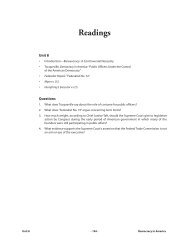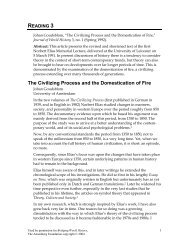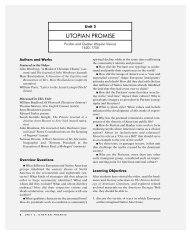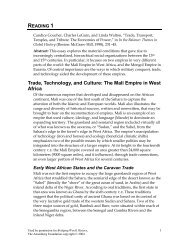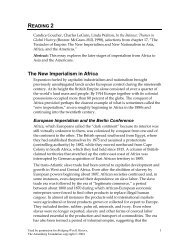Create successful ePaper yourself
Turn your PDF publications into a flip-book with our unique Google optimized e-Paper software.
to the “Chinese provinces.” Both Asian and European merchants moved<br />
Subcontinental shawls from their sites of production to their sites of<br />
consumption along distribution networks that evolved gradually from Asianfocused<br />
seventeenth-century routes to the bustling colonial trade routes of the<br />
nineteenth century (Veinstein 1999; Chaudhury and Morineau 2000).<br />
Map 1.<br />
The Emperors of the Safavid, Zand, and Qajar empires in Iran (c. 1500–1924)<br />
and the Mughal court of North India and its regional satellites (1526–1848)<br />
used Kashmiri shawls and shawl cloth within their “established and<br />
evolving social relations of consumption” (Howes 1996, 2). For example,<br />
they bestowed shawls as khil’at (“robes of honor”) within their political and<br />
religious practices. In the Iranian-influenced culture of the Mughal Indian<br />
court, fine garments given in political settings were intended to establish a<br />
hierarchical relationship between the giver and the recipient, whose<br />
acceptance acknowledged submission. Indeed, the word “khil’at” originally<br />
meant “something [End Page 32] passed on,” especially a “garment cast<br />
off” (Buckler 1922, 197 and 1928, 240). The robes of honor typically were<br />
exorbitantly expensive fabrics. The Mughal khil’at consisted of a sumptuous<br />
set of clothes, which could include a turban, long coat, gown, fitted jacket,<br />
sash, shawl, trousers, shirt, and scarf. One or all of these could be made of<br />
pashmina (shawl cloth) and embellished further with gold-thread<br />
Used by permission for Bridging World History, 4<br />
The Annenberg Foundation copyright © 2004



